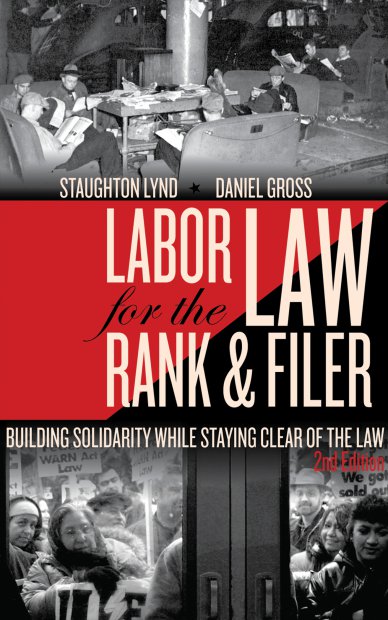Is Someone Always at Fault in a Car Accident?
Imagine this: you’re driving along, minding your own business, when suddenly, out of nowhere, another car smashes into yours. You’re disoriented, injured, and wondering: who’s to blame?
In the vast majority of car accidents, the answer is yes, someone is at fault. But determining who that person is can be a complicated process.
Fault in Car Accidents
Fault in a car accident refers to the legal responsibility for causing the crash. This can be determined by a number of factors, including:
Negligence: A driver is considered negligent if they fail to act as a reasonable person would under the circumstances. This can include things like speeding, running red lights, or driving under the influence of alcohol or drugs.
Intentional wrongdoing: In some cases, a driver may intentionally cause an accident. This could be considered assault or battery, depending on the circumstances.
Product liability: If a car accident is caused by a defective vehicle or part, the manufacturer of that vehicle or part may be held liable.
Determining Fault
Determining fault in a car accident can be a complex process. It often involves investigating the accident scene, interviewing witnesses, and reviewing medical records. In some cases, it may be necessary to hire an accident reconstruction expert to determine how the accident occurred.
Once fault has been determined, the at-fault driver may be held liable for damages. This can include compensation for medical expenses, lost wages, pain and suffering, and property damage.
Comparative Negligence
In some states, the doctrine of comparative negligence applies. This means that even if you are partially at fault for an accident, you may still be able to recover damages from the other driver. The amount of damages you can recover will be reduced in proportion to your degree of fault.
Exceptions to the Rule
There are a few exceptions to the rule that someone is always at fault in a car accident. These include:
- Acts of God, such as earthquakes or floods
- Accidents that are caused by animals
- Accidents that are caused by unavoidable circumstances, such as a sudden medical emergency
If you have been involved in a car accident, it is important to speak to an attorney to discuss your legal rights and options.
Is Someone Always at Fault in a Car Accident?
In the chaotic aftermath of a car accident, assigning blame is often a contentious endeavor. Many people wonder, “Is someone always at fault in a car accident?” The answer, unfortunately, is not always clear-cut. Determining fault in a car accident is a complex process that involves examining multiple factors, including negligence, reckless driving, and traffic violations.
Factors Determining Fault
1. Negligence
Negligence is the most common factor considered when determining fault in a car accident. Negligence refers to the failure to exercise reasonable care to avoid harm to others. In the context of car accidents, negligence can manifest in various forms, such as speeding, failing to yield the right of way, or driving while distracted.
2. Reckless Driving
Reckless driving is an even more serious offense than negligence. It involves intentionally disregarding the safety of others by engaging in extremely dangerous driving behaviors. Examples of reckless driving include racing, weaving in and out of traffic, and running red lights. States have varying degrees of reckless driving and some states do not use the term at all, Reckless driving increases the likelihood of causing an accident and often results in more severe injuries.
3. Traffic Violations
Violating traffic laws is a clear indication of fault in a car accident. Speeding, running red lights, and failing to stop at stop signs are all examples of traffic violations that can lead to accidents. By breaking the law, drivers demonstrate a disregard for the safety of others and assume responsibility for any resulting accidents.
Is Someone Always at Fault in a Car Accident?
Determining fault in a car accident can be a complex undertaking. While it may seem intuitive that someone must be at fault, the legal reality is often far more nuanced. In many cases, multiple parties may share responsibility for an accident, and even seemingly clear-cut cases can involve unexpected complexities.
Negligence
The most common basis for finding fault in a car accident is negligence. Negligence refers to a failure to exercise reasonable care while driving, such as speeding, distracted driving, or failing to yield the right of way. To establish negligence, the plaintiff must prove that the defendant owed them a duty of care, that the defendant breached that duty, and that the breach caused the accident.
Comparative Negligence
In many states, the concept of comparative negligence further complicates fault determination. Under comparative negligence, multiple parties may be found liable for an accident, and their liability is apportioned based on their respective degrees of fault. For example, if a plaintiff is found to be 20% at fault for an accident, they may only be able to recover 80% of their damages from the defendant.
Intentional Conduct
In some cases, an accident may be caused by intentional conduct, such as reckless driving or assault with a deadly weapon. In such cases, the at-fault driver may be held liable for punitive damages, which are intended to punish the driver and deter future misconduct. However, proving intentional conduct can be challenging, as it requires clear and convincing evidence that the driver intended to cause harm.
Assumption of Risk
The defense of assumption of risk may also be raised in some car accident cases. Assumption of risk occurs when a person voluntarily assumes the risk of harm by engaging in a dangerous activity. For example, if a passenger voluntarily rides in a car with a known reckless driver, they may be barred from recovering damages if they are injured in an accident.
Conclusion
Determining fault in a car accident is a complex process that requires a careful examination of the facts and applicable law. While it is not always easy to say who is at fault, an experienced attorney can help you navigate the legal process and protect your rights.
Is Someone Always at Fault in a Car Accident?
Car accidents are often unexpected and can leave victims feeling confused and uncertain about who is to blame. While some accidents may seem clear-cut, others can be more complex. So, is someone always at fault in a car accident? The answer is not always straightforward.
Determining Fault
Determining fault in a car accident involves investigating several factors, including driver behavior, road conditions, and vehicle malfunctions. In most cases, accidents are caused by a combination of factors, and multiple parties may share some degree of responsibility. However, there are certain situations where one party is clearly at fault.
Reckless Driving
Reckless driving involves extreme disregard for the safety of others, such as driving under the influence or engaging in road rage. When a driver’s behavior is so reckless that it causes an accident, they are almost always considered at fault. This is because they have intentionally or knowingly put others at risk.
Negligence
Negligence refers to a failure to exercise reasonable care, which results in an accident. This can include failing to yield at an intersection, driving at an excessive speed, or failing to pay attention to the road. In many cases, negligence is found to be a contributing factor in car accidents.
Shared Fault
In some cases, both drivers may be found to share fault for an accident. For example, if one driver fails to yield at an intersection and the other driver is speeding, both parties may be considered partially responsible. In such cases, the courts will typically assign a percentage of fault to each driver, which will affect how much compensation they receive.
Conclusion
Determining fault in a car accident is not always a clear-cut process. There are many factors to consider, and multiple parties may share some degree of responsibility. However, in cases where one driver’s behavior is clearly reckless or negligent, they are likely to be found at fault for the accident.
Is Someone Always at Fault in a Car Accident?
In the aftermath of a car accident, determining fault can be a complex and challenging task. While it may seem tempting to assume that someone is always to blame, the reality is more nuanced. Understanding the various factors that can contribute to fault is crucial for ensuring a fair and just resolution.
Negligence
Negligence is a key concept in determining fault in car accidents. Negligence refers to the failure to exercise reasonable care, which results in harm or damage to another person or property. In the context of car accidents, negligence can manifest in various forms, such as:
- Distracted driving (e.g., using a cellphone while driving)
- Speeding
- Reckless driving
- Driving under the influence of alcohol or drugs
- Failing to obey traffic signals
If a driver’s negligent actions contribute to an accident, they may be held liable for the damages caused.
Comparative Fault
In some cases, both drivers involved in an accident may be found to be at fault. This is known as comparative fault or comparative negligence. In such situations, the fault is apportioned between the drivers based on the percentage of their contribution to the accident. For instance, if Driver A is found to be 70% at fault and Driver B is 30% at fault, Driver A would be liable for 70% of the damages and Driver B would be liable for the remaining 30%.
Traffic Violations
Traffic violations, such as running a stop sign or failing to yield, can also contribute to fault in an accident. Traffic laws are designed to ensure the safety of all road users, and violating these laws can have serious consequences. If a driver’s violation of a traffic law contributes to an accident, the driver may be held liable for the accident.
Other Factors
In addition to negligence and traffic violations, other factors can also contribute to fault in a car accident. These factors include:
- Road conditions (e.g., slippery roads, potholes)
- Weather conditions (e.g., rain, snow, fog)
- Vehicle malfunctions (e.g., brake failure, tire blowout)
While these factors may not always result in a finding of fault, they can be taken into consideration when determining the extent of the driver’s liability.
Proving Fault
Establishing fault in a car accident often requires a thorough investigation. This may involve gathering evidence such as:
- Police reports
- Witness statements
- Photographs of the accident scene
- Vehicle damage reports
- Medical records
An attorney can help you collect and analyze the evidence to prove fault and ensure that your rights are protected.
Is Someone Always at Fault in a Car Accident?
The aftermath of a car accident can be chaotic and confusing. In the wake of the crash, it’s natural to wonder who is responsible for the damage and injuries. In some cases, the answer is clear-cut: one driver was clearly at fault. But what about the situations where the blame is less obvious?
The answer to the question of whether someone is always at fault in a car accident is a resounding no. In many cases, multiple parties share responsibility for the crash. This can be due to factors such as:
Distracted driving
Speeding
Drunk driving
Reckless driving
Vehicle defects
Road conditions
Shared Fault
In some cases, multiple parties may share fault in an accident, resulting in a comparative fault or contributory negligence determination. This means that each party’s liability is determined based on their percentage of fault. For example, if one driver is found to be 60% at fault and the other driver is found to be 40% at fault, the first driver would be responsible for 60% of the damages and the second driver would be responsible for 40% of the damages.
Comparative fault laws vary from state to state. Some states have pure comparative fault laws, which means that a party can recover damages regardless of their percentage of fault. Other states have modified comparative fault laws, which bar a party from recovering damages if their percentage of fault is greater than a certain threshold (such as 50%).
Contributory negligence laws are even more restrictive than modified comparative fault laws. Under contributory negligence laws, a party cannot recover damages if they are found to be any percentage at fault for the accident. This means that even if the other driver was primarily at fault, you could be barred from recovering any damages if you were even slightly at fault.
If you have been involved in a car accident, it is important to contact an experienced attorney to discuss your case. An attorney can help you determine who was at fault for the accident and what your legal options are.
Is Someone Always at Fault in a Car Accident?
When two or more vehicles collide, it’s natural to wonder who’s to blame. In most cases, one driver will be found at fault, but there are exceptions to this rule. Here’s a closer look at when someone is and isn’t at fault in a car accident.
Fault vs. No-Fault
In most states, car accidents are handled on a fault basis. This means that the driver who caused the accident is liable for the damages. However, a few states have no-fault car insurance systems. In these states, fault is not typically assigned and drivers seek compensation through their own insurance policies.
Determining Fault
When determining fault in a car accident, insurance companies will consider a variety of factors, including:
- The police report
- Witness statements
- Property damage
- Driver behavior
Exceptions to the Rule
Even in fault-based states, there are some exceptions to the rule that one driver is always at fault. For example, if a pedestrian or cyclist causes an accident, they may be held liable. Additionally, if a driver is acting in self-defense or is the victim of an unavoidable accident, they may not be found at fault.
Comparative Fault
In some states, the concept of comparative fault is used. Under comparative fault, each driver is assigned a percentage of fault. This percentage is then used to determine how much compensation each driver is entitled to.
No-Fault States
The following states have no-fault car insurance systems:
- Florida
- Hawaii
- Kansas
- Kentucky
- Massachusetts
- Michigan
- Minnesota
- New Jersey
- New York
- North Dakota
- Pennsylvania
- Utah
- Washington
No-fault systems have their own advantages and disadvantages. One advantage is that they can help to reduce the number of lawsuits filed after a car accident. However, no-fault systems can also lead to higher insurance premiums.
Conclusion
Determining fault in a car accident can be a complex process. There are many factors to consider, and the rules vary from state to state. If you have been involved in a car accident, it is important to contact an attorney to discuss your legal rights.




Leave a Reply